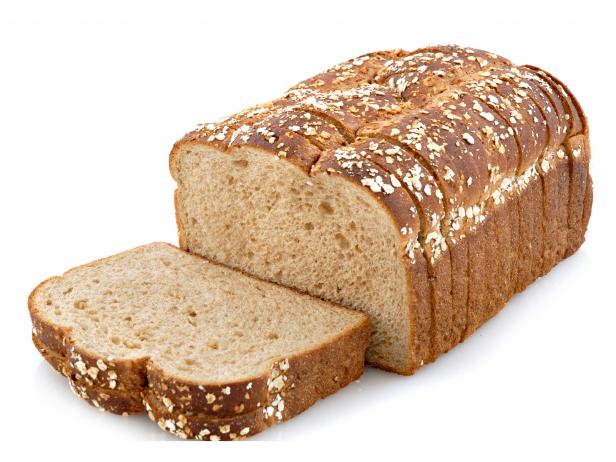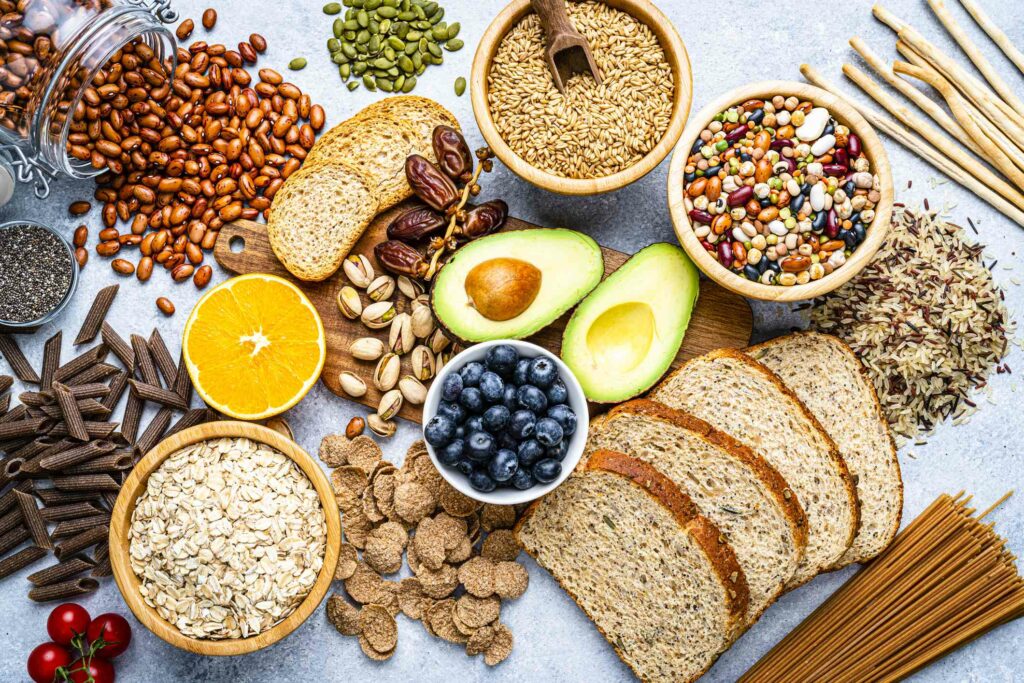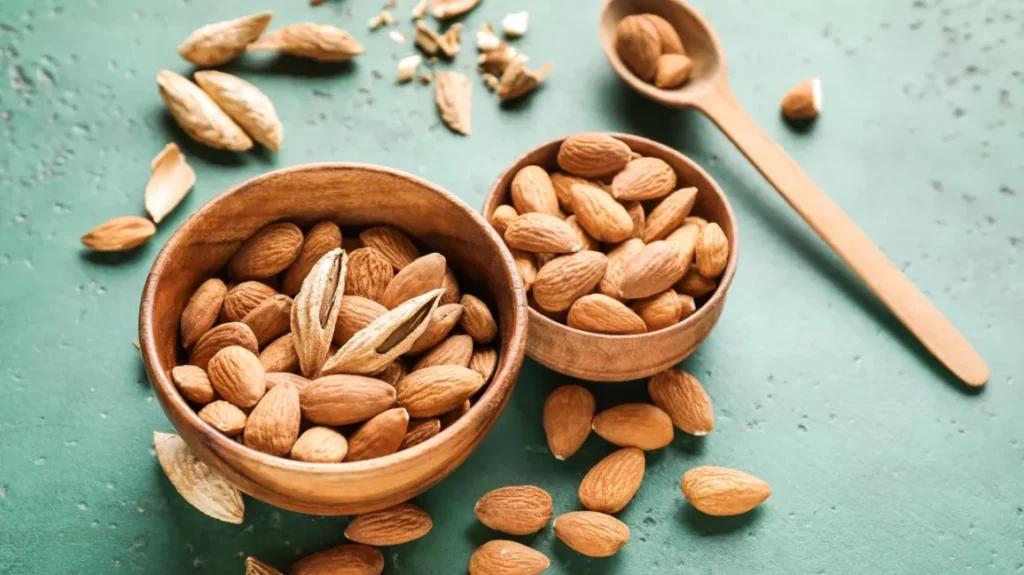We hear a lot about high-fibre diets these days. So you may be wondering what are the benefits of a high-fibre diet? Let’s have a look!
Fibre is an essential component of a healthy diet that can offer various benefits for your digestion, weight management, heart health, and overall well-being. Fibre is found in plant foods such as fruits, vegetables, whole grains and legumes and it is the part that your body cannot digest or absorb. Instead, it passes through your digestive system and helps to regulate your bowel movements, lower your cholesterol and blood sugar levels and feed your beneficial gut bacteria.
There are two main types of fibre: soluble and insoluble. Soluble fibre dissolves in water and forms a gel-like substance that can bind to cholesterol and glucose in your blood and help to eliminate them. Insoluble fibre does not dissolve in water and adds bulk to your stool making it easier to pass and preventing constipation. Both types of fibre are important for your health and you can get them from a variety of foods.

Some of the benefits of a high-fibre diet include:
- Preventing or treating constipation: A high-fibre diet can help to normalize your bowel movements by increasing the weight and size of your stool and softening it. This can reduce the strain on your colon and prevent hemorrhoids, diverticulitis and other bowel problems.
- Weight loss: A high-fibre diet can help you feel full for longer by slowing down the digestion of food and reducing the absorption of calories. This can help you eat less and control your appetite. Additionally, fibre-rich foods tend to be lower in fat and calories than processed foods.
- Healthy metabolism: A high-fibre diet can help to regulate your blood sugar levels by slowing down the absorption of glucose into your bloodstream. This can prevent spikes and crashes in your energy levels and reduce the risk of developing type 2 diabetes. Moreover, fibre can stimulate the production of hormones that regulate your metabolism and appetite such as insulin, leptin and ghrelin.
- Gut health: A high-fibre diet can support the growth and diversity of your beneficial gut bacteria which play a key role in your immune system, digestion, mood and overall health. Fibre acts as a prebiotic, meaning that it feeds the probiotics in your gut and helps them to produce short-chain fatty acids (SCFAs) that have anti-inflammatory and protective effects on your colon.
- Reduced inflammation: A high-fibre diet can help to lower the levels of inflammation in your body by modulating your immune system, reducing oxidative stress and improving your gut barrier function. Chronic inflammation is linked to many diseases such as cardiovascular disease, cancer, arthritis and depression.
- Lowered risk of depression: A high-fibre diet can help to improve your mental health by influencing your brain chemistry, neurotransmitters, hormones and gut-brain axis. Fibre can increase the production of serotonin, dopamine and norepinephrine which are neurotransmitters that regulate your mood, motivation and cognition. Fibre can also lower the levels of cortisol which is a stress hormone that can trigger depression.
- Improved life expectancy: A high-fibre diet can help to extend your lifespan by reducing the risk of mortality from various causes, such as cardiovascular disease, cancer, respiratory disease and infectious disease. According to a 2019 meta-analysis of 185 studies and 58 clinical trials involving 4.6 million participants from 18 countries every 8 g increase in daily fibre intake was associated with a 5–27% reduction in all-cause mortality.

How to eat more fibre
The recommended daily intake of fibre for adults is 22–34 g per day depending on age and sex. However, most people do not meet this target due to their consumption of refined grains, processed foods, animal products and added sugars. To increase your fibre intake you can follow these tips:
- Start your day with a high-fibre breakfast cereal that contains at least 5 g of fibre per serving. You can also add fruits, nuts, seeds or oat bran to boost the fibre content.
- Switch to whole grains instead of refined grains whenever possible. Choose breads that list whole wheat or other whole grains as the first ingredient. Opt for brown rice, quinoa, barley, buckwheat or millet instead of white rice or pasta.
- Eat more fruits and vegetables throughout the day. Aim for at least five servings per day (one serving is equivalent to one medium fruit or half a cup of cooked or raw vegetables). Include a variety of colours and types to get different types of fibre and antioxidants. Eat them with their skin or peel whenever possible.
- Snack on nuts, seeds, dried fruits, popcorn (without added salt or butter) or hummus with whole-wheat crackers or carrot sticks. These foods are rich in fibre as well as healthy fats, protein
and minerals. - Include more legumes in your diet, such as beans, lentils, chickpeas, peas, soybeans, and peanuts. These foods are excellent sources of fibre as well as plant-based protein, iron, folate and phytochemicals. You can add them to soups, salads, stews, curries or burgers.
- Drink plenty of water and other fluids to help fibre move through your digestive system and prevent dehydration or constipation. Aim for 3–4 pints (1.5–2 liters) of water per day or more if you exercise or live in a hot climate.
- Increase your fibre intake gradually over 2–3 weeks to allow your body to adjust and avoid side effects such as bloating, gas or diarrhea. You can start by adding one extra serving of fibre-rich food per day and monitor how you feel.

A high-fibre diet is one of the best ways to improve your health and well-being. By eating more fibre-rich foods you can support your digestion, weight management, heart health and overall well-being. Try to include a variety of fibre sources in your diet and drink plenty of water to reap the benefits of this essential nutrient.
I hope you have enjoyed this content. If you have questions please leave them in the comments section below. And if you’d like to be notified of updates on this platform enter your name and best email in the form below.

Grant Rayner